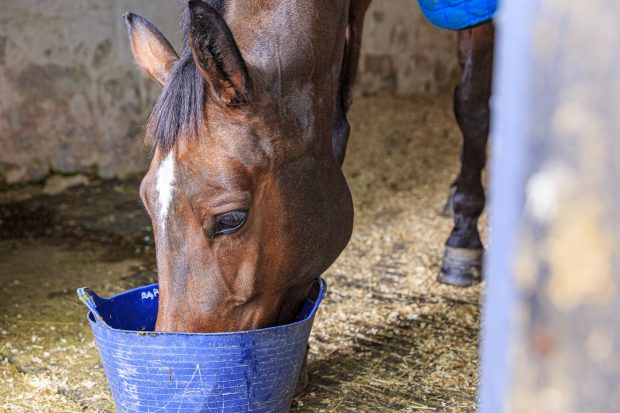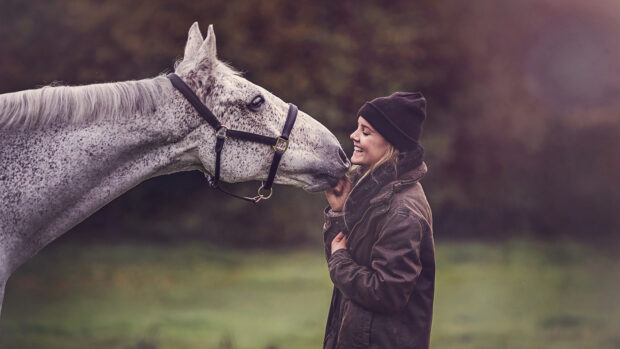A new mix has been formualted for older horses and ponies that need to gain weight and condition during the winter months.
The Equerry veteran mix has high levels of protein to promote muscle tone and contains oil and linseed to improve condition and ensure a shiny coat.
The new mix is made from digestible cereals including yeast and has raised levels of vitamin E, an important antioxidant.
“Added vitamins and minerals including magnesium make Equerry Veteran mix the ideal feed for your faithful equine friend this winter,” said a company spokesman.
The Equerry range is manufactured by HJ Lea Oakes, one of the longest established independent animal feed manufacturers in Britain. The company dates back to 1675 when the Lea family began milling feeds to supply to the Cheshire farming community.
Equerry horse feeds are formulated by nutritionists using quality ingredients and are produced under the BETA NOPS scheme.
The range includes seven cubes, six coarse mixes, one mash and one treat in the form of Equerry minty horse treats.
In addition to the new veteran mix there are high fibre cubes for horses and ponies at rest or in very light work, performance cubes and sports mix for competition horses in hard work, and conditioning cubes and mixes, stud & youngstock cubes and mix and racehorse cubes.
The Equerry veteran mix comes costs £12.35 for a 20kg size bag.
More information here or telephone 01845 565640.
Here are some rules of feeding from Equerry:
- Feed plenty of forage.
- Feed little and often: Divide the daily hard feed into several small meals of no more than 400g dry-weight/100kg bodyweight. Meals should be spaced at least four hours apart.
- Provide a constant supply of fresh water: On average a horse will drink around 20 litres per day.
- Make all changes gradually.
- Keep to the same feeding routine.
- Feed by weight not volume.
- Feed according to condition: Ideally, you should be able to able to feel but not see your horse’s ribs, the hind-quarters should be rounded and the neck firm, but without a crest.
- Feed according to temperament.
- Replace salt losses.




